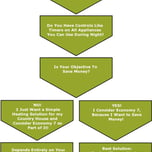Answer these simple questions and we will find you the BEST prices
Which type of solar quotes do you need?
It only takes 30 seconds
100% free with no obligation

Get up to 4 quotes from our selected suppliers by filling in only 1 form

Save money by comparing quotes and choosing the most competitive offer

Our service is 100% free and with no obligation
- GreenMatch
- Blog
- How to Apply for the Feed-in-Tariff (FiT)?
How to Apply for the Feed-in-Tariff (FiT)?
What You Need to Know Before Applying
The Feed-in-Tariff (FiT) programme is regulated and under close supervision by Ofgem in order to ensure that regulations are followed thoroughly. The scheme closed in 2019 due to the decrease in the cost of solar panels over the recent years.
As solar energy has become more accessible, the prices have lowered dramatically over the years, and therefore the scheme was not deemed necessary any longer.
Those solar PV installations that are registered under the FIT scheme will continue to receive the payments until the contractual agreement with their MCS-certified supplier ends.
The Feed-in Tariff ended in the UK in April 2019. The reason for this is that the renewable technologies covered by the scheme have become more affordable, and thus more widely accessible.
Registering for FiTs
After you install your renewable system, there are a few specific steps that you must follow in order to register for FiTs. Firstly, you should ask your installer to register you on the central MCS database. Your installer will then send you the certificate confirming your system’s MCS compliance. Afterwards you must contact your FiT supplier that you want to register to the FiT scheme and send them the following:
-
A proper completed application form.
-
The MCS certificate.
-
Just for solar PV, you must send the Energy Performance Certificate that shows your household reaches the energy efficiency rating band D or better.
Subsequently, your Feed-in Tariff supplier will undergo the next steps such as:
-
Cross-reference your installation with the MCS database and other eligibility checks.
-
Must confirm your qualification and the date you are eligible for payments from.
-
Will add you to the Ofgem Central FiT Register, which documents all installations integrated in the FiT scheme.
-
Find mutually beneficial times with you if and when you require to provide meter readings and when the scheme should make the payments to you.
In order to make sure you qualify for the Feed-in Tariff scheme, the total installed capacity of the system you are building in must not exceed 5 megawatts (MW). This limit is 2 kWh in the case of micro Combined Heat and Power (CHP). The low carbon and renewable technologies available for this scheme are:
-
Solar Photovoltaic (PV) - Represented by the method of generating electrical power by converting solar radiation into electricity.
-
Wind - The energy extracted using wind turbines to produce electrical power.
-
Micro CHP - It’s an extension of the idea of cogeneration to the single family homes or small office buildings in the range 0,3 - 50 Kw.
-
Hydro - Electricity is being produced from machines which are run by moving water.
-
Anaerobic Digestion - biological process that makes it possible to degrade organic matter by producing biogas which is a renewable energy source and a sludge used as fertilizer.
All installations that will be considered for the FiT scheme must take place in Great Britain and have an approved metering in place. People who are applying for accreditation for their installations must go through one of two routes, depending on the capacity of the system, either the MCS-FiT or the ROO-FiT route.

MCS-FiT
This accreditation is valid for solar PV and wind installations which have a declared net capacity up to 50 kWh and micro CHP systems with a net capacity up to 2 kWh. These applications must be submitted to a FiT Licensee for accreditation.
ROO-FiT
This accreditation is required for solar PV and wind installations that have a declared net capacity bigger than 50 kWh and all anaerobic digestion and hydro systems up to 5 MW. Obviously, these applications must be sent for a ROO-FiT accreditation.
The date you can start receiving the FiT payments for your renewable electricity produced and exported is called the Eligibility Date. This date can be defined as:
-
The date in which the Feed-in Tariff supplier receives your written request for registration (this includes the MCS certificate and other supporting documents)
-
The date in which the FiT control body receives your application for MCS or ROO accreditation.
-
The date in which installation begins.
As an example, if the MCS-FiT installation was registered on 1st of September 2010 and the application for FiT was received on the 15th of September 2010 by the FiT Licensee, the exact Eligibility Date would be 15th of September. The electricity produced and exported before this date is not eligible for payments.
The UK government recommends that everyone who is posting their applications to their FiT Licensee should use Royal Mail’s Recorded Delivery service. You could also use the Special Delivery service if you wish to be more assured that their application will reach your FiT Licensee by a specific date.
Feed-in Tariff payments will remain for the duration of the Eligibility Period. This period starts from the first day of your Eligibility Date and lasts for:
-
Solar PV - 20 years (25 years for those who have an eligibility date before 1st of August 2012)
-
Wind - 20 years.
-
Micro CHP - 10 years.
As mentoned above, you can also sell units of electricity you don't use back to your electricity supplier. This is what is called an "export tariff". For example, you will receive 4.5p per unit of electricity in cases such as:
-
Solar panels when you applied for FiT after 1st of August 2012.
- Other technologies when you applied for FiT after 1st of December 2012.
Installation Planning
In order to start the installation process faster, most renewable energy installments at domestic level are covered by the so-called “permitted development”, so they wouldn’t require planning permissions, although there are some exceptions:
-
Conservation areas or listed buildings.
-
Air-source heat pumps and wind turbines.
-
If these systems are above certain sizes.
- For small systems, so that you conform with the Engineering Recommmendation G83, requires the DNO to be announced.
- For larger technologies, which need to conform with G59, requires preceding approval from the DNO. Upgrades to the grid might be needed, upgrades which a new plant owner may be liable of, but that is the sole decision of the DNO.
The Energy Network Association Provides the necessary counseling in matters of Engineering Recommendations and offers a map displaying which DNO is in your area of the country.
Accreditations
As in any government funded programme, installations require accreditation for the tariffs that people will receive. Some of them may be already qualified for preliminary accreditation (before the system is actually installed). But not all technologies can obtain this accreditation and need further requirements:
-
Hydro-electric systems need an abstraction license straight from the Environment Agency in order to use water from a stream.
-
Biomass and other fuel-burning systems require permission from the local authorities under the Clean Air Act.
We strive to connect our customers with the right product and supplier. Would you like to be part of GreenMatch?




